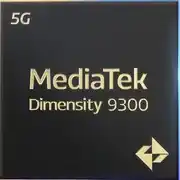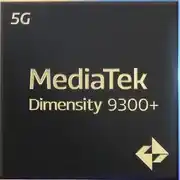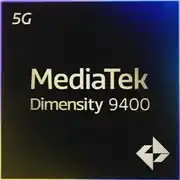Qualcomm Snapdragon 8 Gen 4

Qualcomm Snapdragon 8 Gen 4: The New Benchmark for Mobile Performance
In the world of mobile technology, every year processors emerge that redefine standards of speed, efficiency, and functionality. The Qualcomm Snapdragon 8 Gen 4 is one such chip. With its record-breaking benchmark scores (Geekbench 6 Single Core – 2902, Multi Core – 9840, AnTuTu 10 – 3,196,241) and advanced 3-nm process technology, it promises to be the foundation for flagship smartphones in 2024-2025. Let’s explore what makes this processor unique and who it is suitable for.
1. Architecture and Process Technology: Power and Efficiency
The Snapdragon 8 Gen 4 is built on a 3-nm technology, which allows for more transistors to be placed on the chip while consuming less power. It is the first Qualcomm processor with fully custom Oryon cores designed by the company's engineers (previously, modified ARM cores were used).
CPU: 8 Cores Focused on Performance
— Configuration: The 8 cores are divided into two groups:
- 4 high-performance cores with a frequency of up to 4.0 GHz (Oryon architecture), optimized for demanding tasks like gaming and rendering.
- 4 energy-efficient cores (up to 2.5 GHz) for background processes, saving battery life.
— Innovation: The removal of mid-tier cores – all cores operate either at maximum or in power-saving mode. This reduces latency when switching tasks.
GPU: Adreno 760 – Next-Level Graphics
— Support for real-time ray tracing in games.
— Compatibility with API Vulkan 1.3 and OpenGL ES 3.2.
— 25% increased performance compared to the Adreno 750 in Snapdragon 8 Gen 3.
Artificial Intelligence:
— 8th generation Hexagon NPU with AI accelerators for photo processing, voice commands, and AR applications.
— Computing speed of up to 60 TOPS (trillion operations per second), which is twice as high as Gen 3.
2. Performance in Real-World Tasks
The benchmark numbers are impressive, but how does the processor perform in real life?
Gaming:
— Max Graphics Settings: In Genshin Impact or Honkai: Star Rail, stable 60 FPS even in battles with numerous effects.
— “Ultra Performance” Mode: In gaming smartphones with active cooling, the GPU frequency can rise to 900 MHz, providing 120 FPS in PUBG Mobile.
— Thermal Output: Thanks to the 3-nm process, the processor heats up 15% less than the Snapdragon 8 Gen 3, but still requires quality cooling under peak loads.
Multimedia:
— 8K/60fps Video: Recording and playback without lag.
— Displays: Support for resolutions up to 4K (144 Hz) and HDR10+ technology.
AI Applications:
— Photography: “AI Portrait” and “Night Sky” modes are processed three times faster.
— Voice Assistants: Speech recognition with 99% accuracy even in noisy environments.
Power Consumption:
— In normal mode (social media, music), the smartphone lasts up to 20 hours.
— With active use (gaming, photography) – up to 6-7 hours.
3. Built-in Modules: Communication of the Future
The Snapdragon 8 Gen 4 is not just a CPU and GPU but also a suite of communication solutions.
Snapdragon X75 Modem:
— 5G: Speeds of up to 10 Gbps (mmWave + Sub-6).
— 4G: Supports LTE Cat.24 (up to 3 Gbps).
Wi-Fi 7 and Bluetooth 5.4:
— Wi-Fi 7 offers speeds up to 5.8 Gbps and stable connectivity in crowded places (airports, stadiums).
— Bluetooth 5.4 with LE Audio enhances sound quality in wireless headphones and reduces latency.
Satellite Communication:
— Emergency SMS transmission via systems like Iridium (similar to iPhone 14/15).
4. Comparison with Competitors
Apple A17 Pro:
— The Snapdragon 8 Gen 4 surpasses Apple in multi-core tests for the first time (Geekbench Multi Core: 9840 vs 7200 for A17 Pro).
— However, Apple retains leadership in single-core performance (2902 vs 3200).
MediaTek Dimensity 9300:
— Dimensity 9300 excels in multithreading thanks to its 12 cores but falls short in power efficiency.
— AnTuTu Snapdragon 8 Gen 4 scores 3.19 million compared to 2.8 million for MediaTek.
Previous Generations:
— The Snapdragon 8 Gen 4 is 35% faster in gaming than Gen 3 and 50% faster in AI tasks.
5. Use Cases
Gaming:
— Ideal for VR and AR games (for example, projects like Meta Quest).
— Support for gamepads and haptics with latency under 10 ms.
Daily Tasks:
— Instant switching between 50+ browser tabs.
— Loading heavy applications (such as Adobe Lightroom) in 1-2 seconds.
Photo and Video:
— “Cinematic 4K” mode with AI stabilization.
— Simultaneous recording from three cameras (e.g., main, ultra-wide, and zoom).
6. Pros and Cons
Advantages:
— Best-in-class performance.
— Support for Wi-Fi 7 and satellite communication.
— Optimization for AI tasks.
Disadvantages:
— High device costs (starting from $1000).
— Requires advanced cooling systems in gaming scenarios.
7. Practical Tips for Choosing a Smartphone
— Cooling: Look for models with vapor chambers or liquid cooling (such as the ASUS ROG Phone 8).
— Battery: Ideally, 5000 mAh with support for 100W charging or higher.
— Display: AMOLED with a refresh rate of 120-144 Hz for gaming and HDR10+ for video.
Types of Devices:
— Flagships (Samsung Galaxy S25 Ultra, Xiaomi 14 Pro).
— Gaming smartphones (Nubia Red Magic 9).
8. Final Thoughts
The Snapdragon 8 Gen 4 is a processor for those who want the maximum from their mobile device. It is suitable for:
— Gamers, who value graphics and FPS;
— Content creators, who shoot and edit videos on the go;
— Tech enthusiasts, eager to try out AI features and Wi-Fi 7.
Key benefits include longevity (extra power for 3-4 years), connectivity speed, and versatility. If your budget allows, the Snapdragon 8 Gen 4 will be an excellent investment in a tech-savvy future.
Basic
GPU Specifications
Connectivity
Memory Specifications
Miscellaneous
Benchmarks
Compared to Other SoC
Related SoC Comparisons
Share in social media
Or Link To Us
<a href="https://cputronic.com/en/soc/qualcomm-snapdragon-8-gen-4" target="_blank">Qualcomm Snapdragon 8 Gen 4</a>






